First off all this will be in two parts
The making of and the first launch
This is to keep things organized and readable
so, first:
The Making
After some research, I had concluded that the best and easiest form of Sugar based rocket fuel would be a mix of potassium nitrate and sorbitol
Sorbitol is a alcohol sugar which is used as a sweetener in candy and wine (since it does not ferment)
It is largely phased out but can still be bought from specialist resellers
My fellow rocketeer bought a bag of 1 kilo from a brewery specialist
The ratio that was used was 65% KNO3 and 35% Sorbitol by weight
This recipe was procured from Nakka Rocketry (Thanks Richard for the great resource) and the procedure was adjusted from a video by the ElementalMaker
The procedure used will be listed out here
(Usual disclaimer that this is just here for completeness, you should not follow this and if you do i am not responsible, i am just a hobbyist doing this for fun)
- First of all i ground all ingredients to a fine, flour like powder (The sorb came pre powdered so that was used as is)
- I mixed them lightly in a paper cup, most of the mixing was done during the melting
- I heated a electric griddle to 150 Degrees Celsius (measured using a multimeter with thermocouple), and poured the mixed powder on there, Stirring constantly
- I mixed it around until fully molten and packed it into a pvc casing with clay at one end (approx 10 CM)
- I stuck in a screwdriver into the soft fuel to core it, and tampered it down to create a flat base on top to put a bulkhead on
- I let it cool for several hours and then put on the bulkhead and drilled a nozzle
This is slightly simplified and was not done too precisely
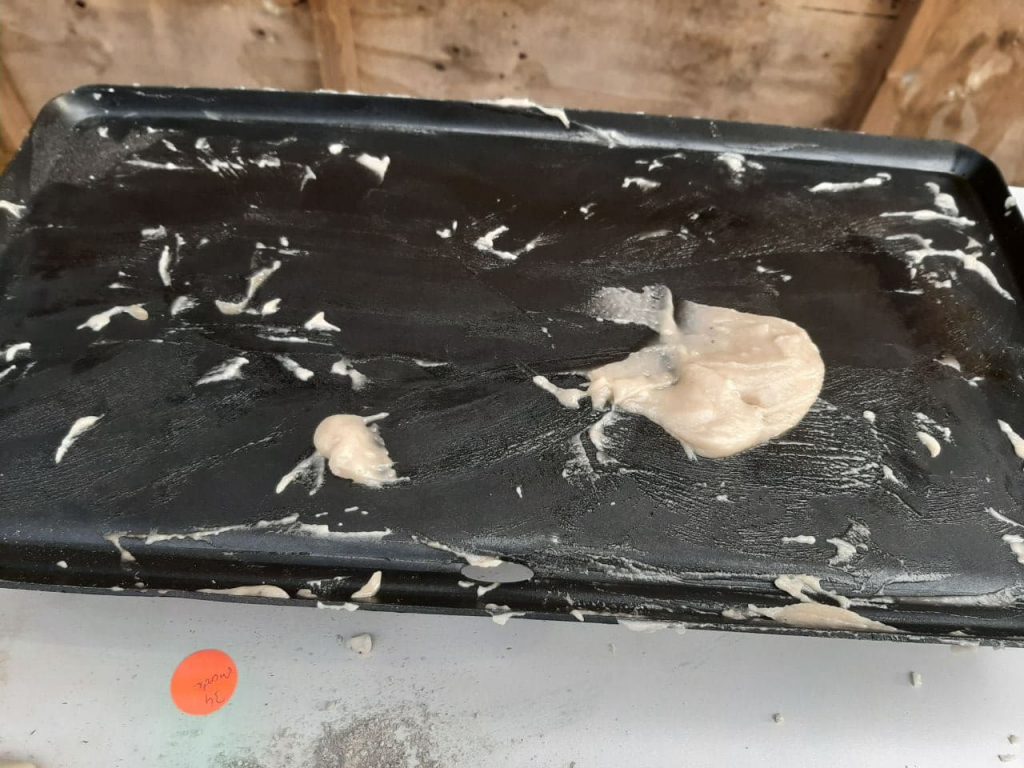
This got me a few of these Rockets for 100 grams of fuel
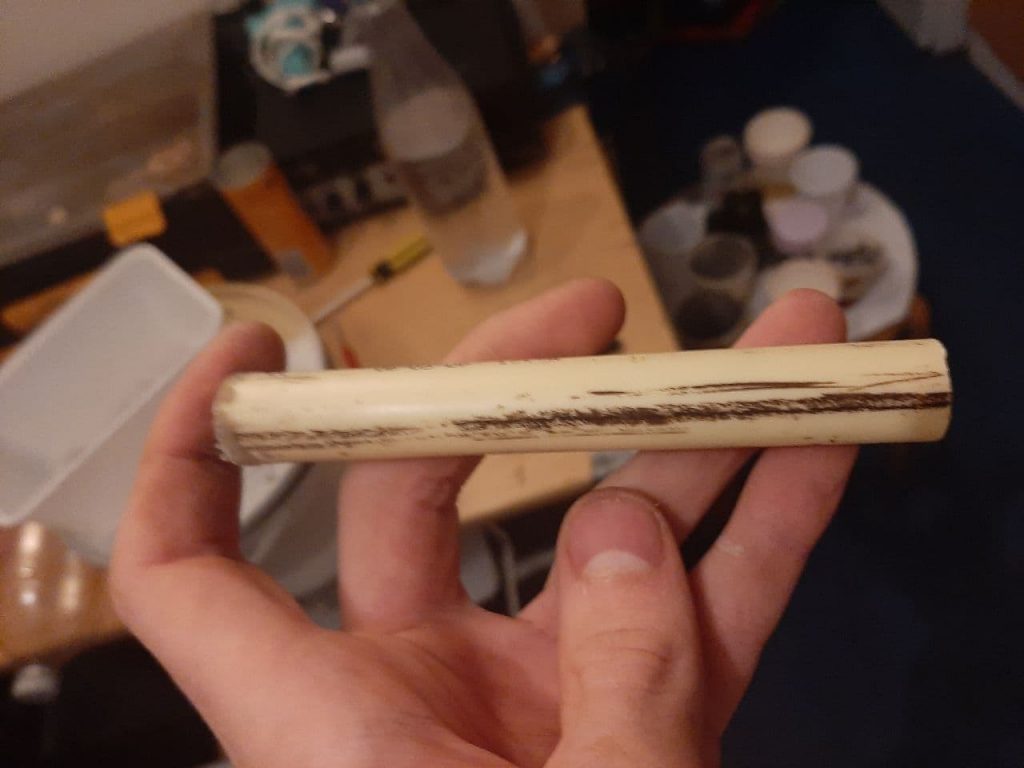
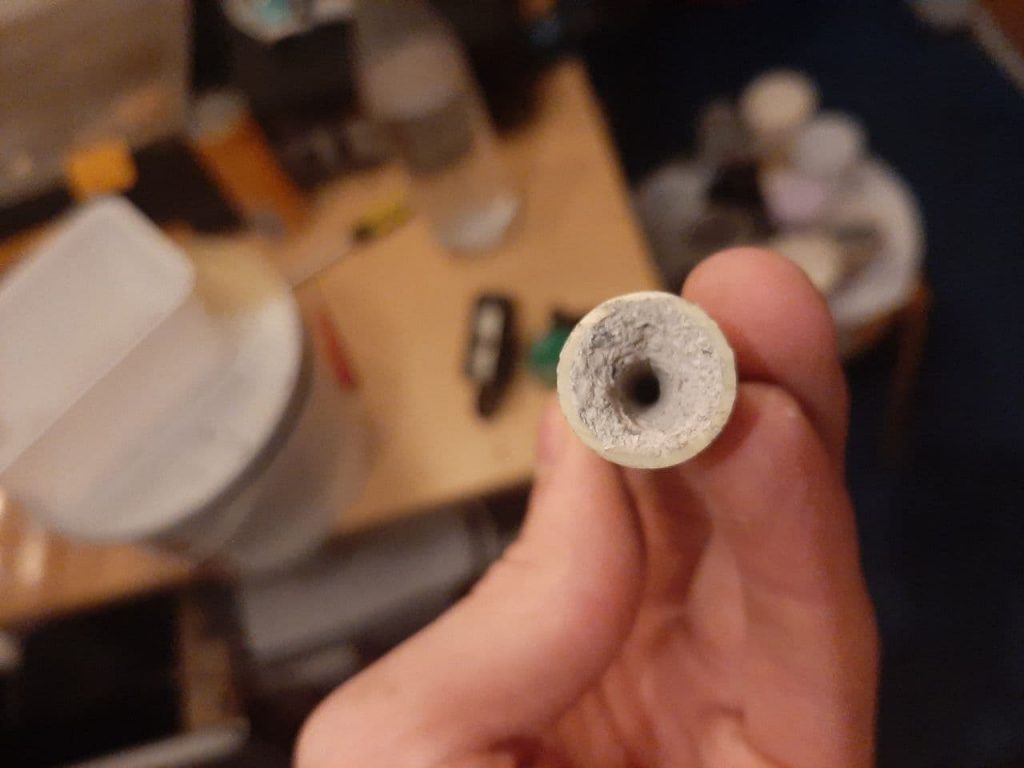

Here are some samples of the fuel being burned:
Some things that i have noticed about the fuel are that
1. It takes some effort to ignite, bubbling a bit before starting to burn (This might be due to moisture absorbed by the KNO3 prior to use, or it melting before burning, or both. This is also why I kept burning my finger, since it took a while and when it goes, it goes)
2. It burns very cleanly, very rapidly and very evenly
Almost no residue is left behind, and it burns at a even rate, which is exactly what is wanted
Now, onto:
The Launch
From the 3 rockets I have only had time to launch one, the other ones will be documented in a separate post.
First of all, the launch site:
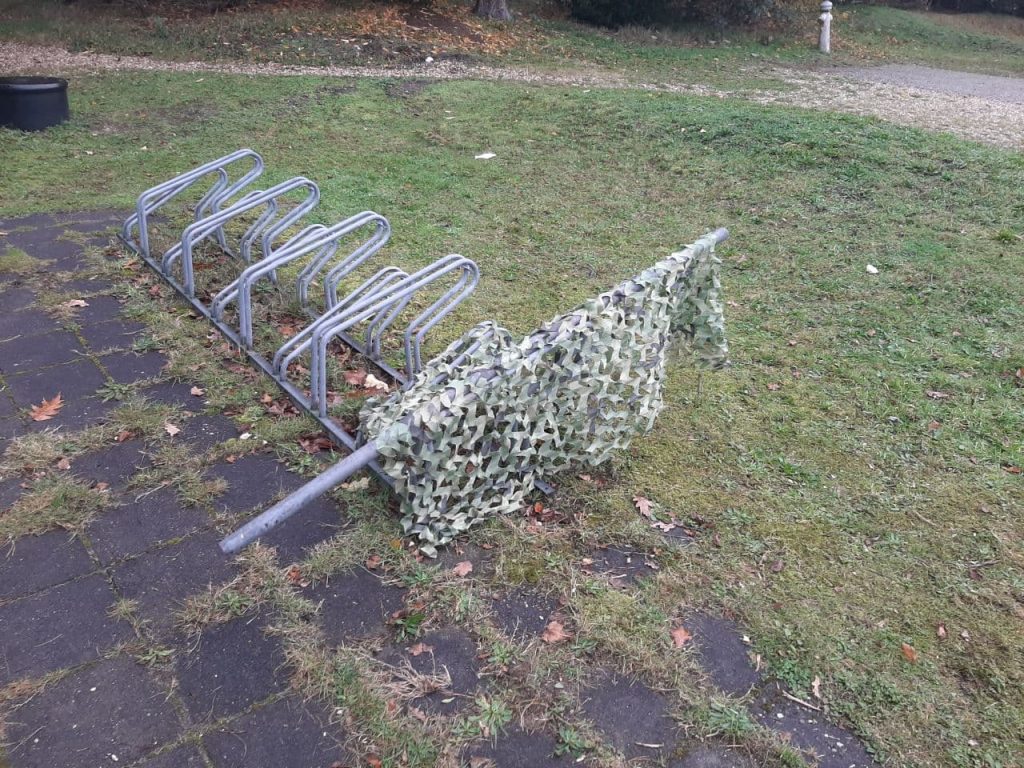
I used a large (slightly bent) metal tube I found, positioned on a bike rack at a local parking lot
(The Camo is just for show)
The engine (measured at 29.82 grams) is placed and ignited at the bottom of the tube and allowed to fly out freely, this is to try and aim the rocket when it reaches full power instead of before it (this did not work as shown below)
I present to you, the Launch:
My intended path was a parabolic trajectory, horizontally, with a expected apoapsis (Highest point) of 3 meters and a total distance of at best 20
What I got was a apoapsis of somewhere between 50 and 150 meters and a total distance (from launch to landing) of 115 meters)
Sadly, all the static cameras were adjusted to this expected path, so the only ‘good’ footage I have is from a friend who started filming last minute (and great thanks to him for that)
Short side note: I intended to fire the rocket off electrically, but the nozzle was too small and long to fit a normal e-match and I had no time to figure out a alternative way, so I resorted to using some old fuse instead
As you can see (especially on the wideshot) shorty after liftoff it went 90 degrees towards the sky, went 50 to 150 meters high, and proceeded to land 115 meters away from the launch site
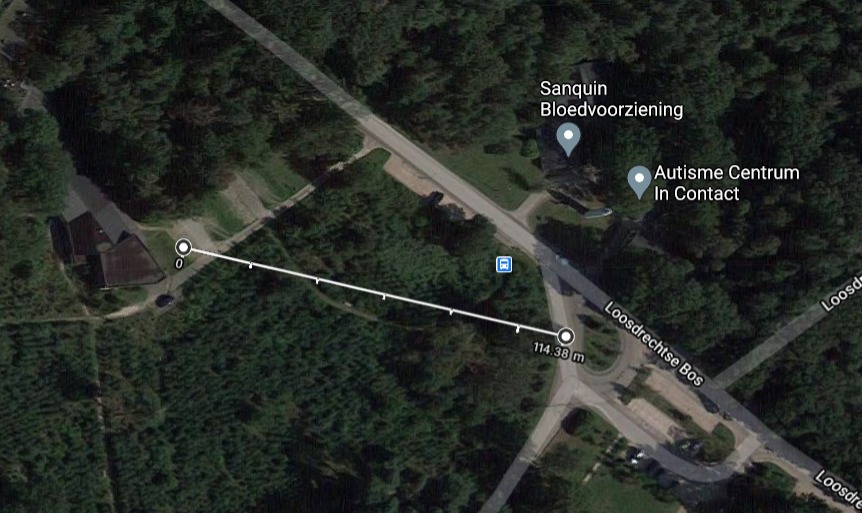
And as you can hear from the footage, I was very pleased about this
(For reference, I am the one in the lab coat)
The casing was recovered (No pics of the landing site because my phone was still against a pole) and is pictured here
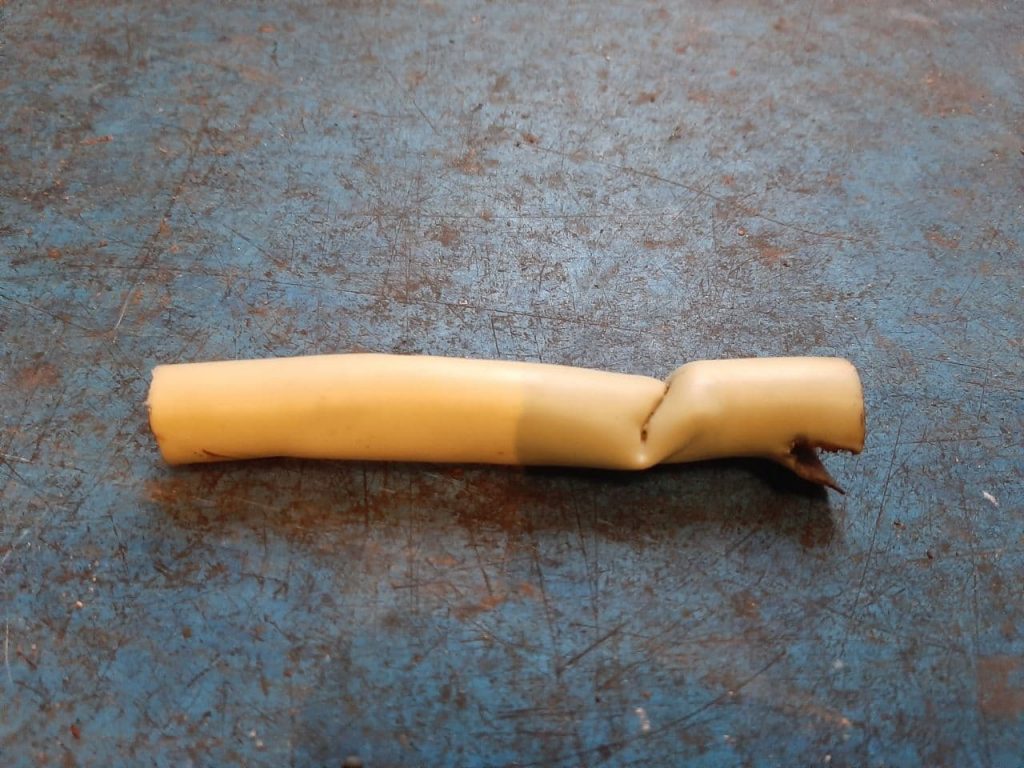
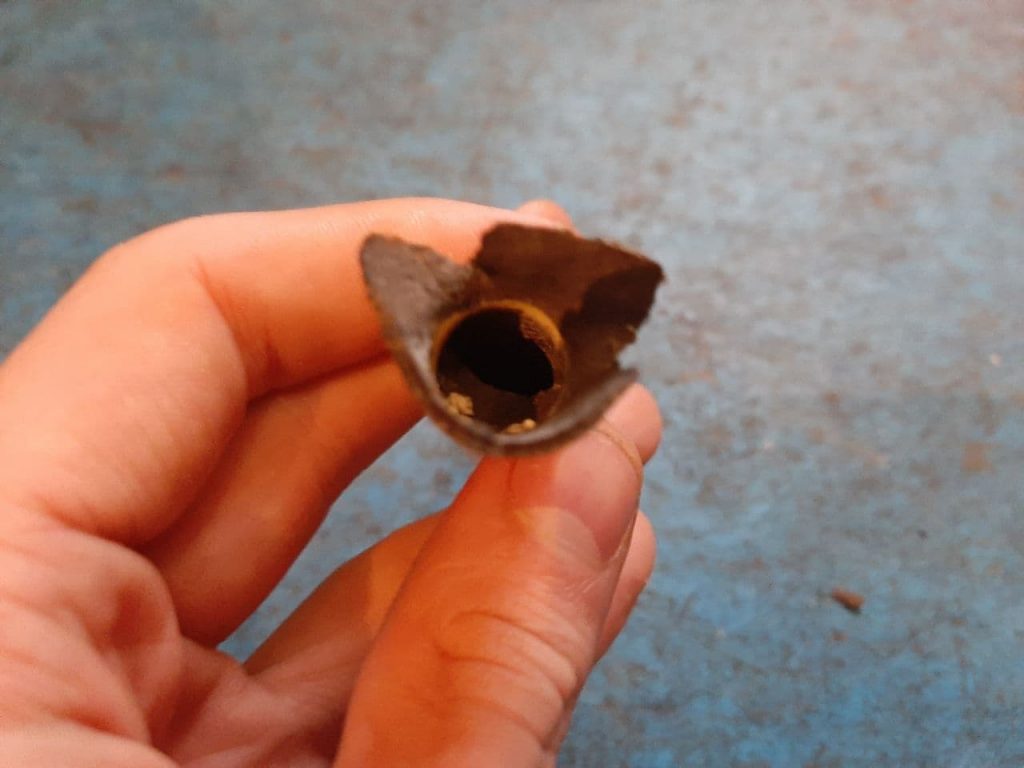
(Better pictures might be uploaded later) (or not, oops)
Note the ‘bend’ and the split at the bottom
My best guess is that the soft plastic crushed into itself at landing and it broke open due to the nozzle pressure, possibly causing the sudden upwards trajectory
I will try to analyze the footage and extrapolate height, speed, force, and total distance traveled (in air) from that, this will take some time and will be posted separately
Next step after more testing is going to be trying to make one with a body and a parachute, so that it can be launched and recovered reliably
After that I will design and build a flight computer that sends height, speed, acceleration, orientation, GPS location and temperature over RF, and backs it up to a local Micro-SD Card, but I want to make sure I get it back first
(This ended up being RFC V1.2, version 2 is currently in development)

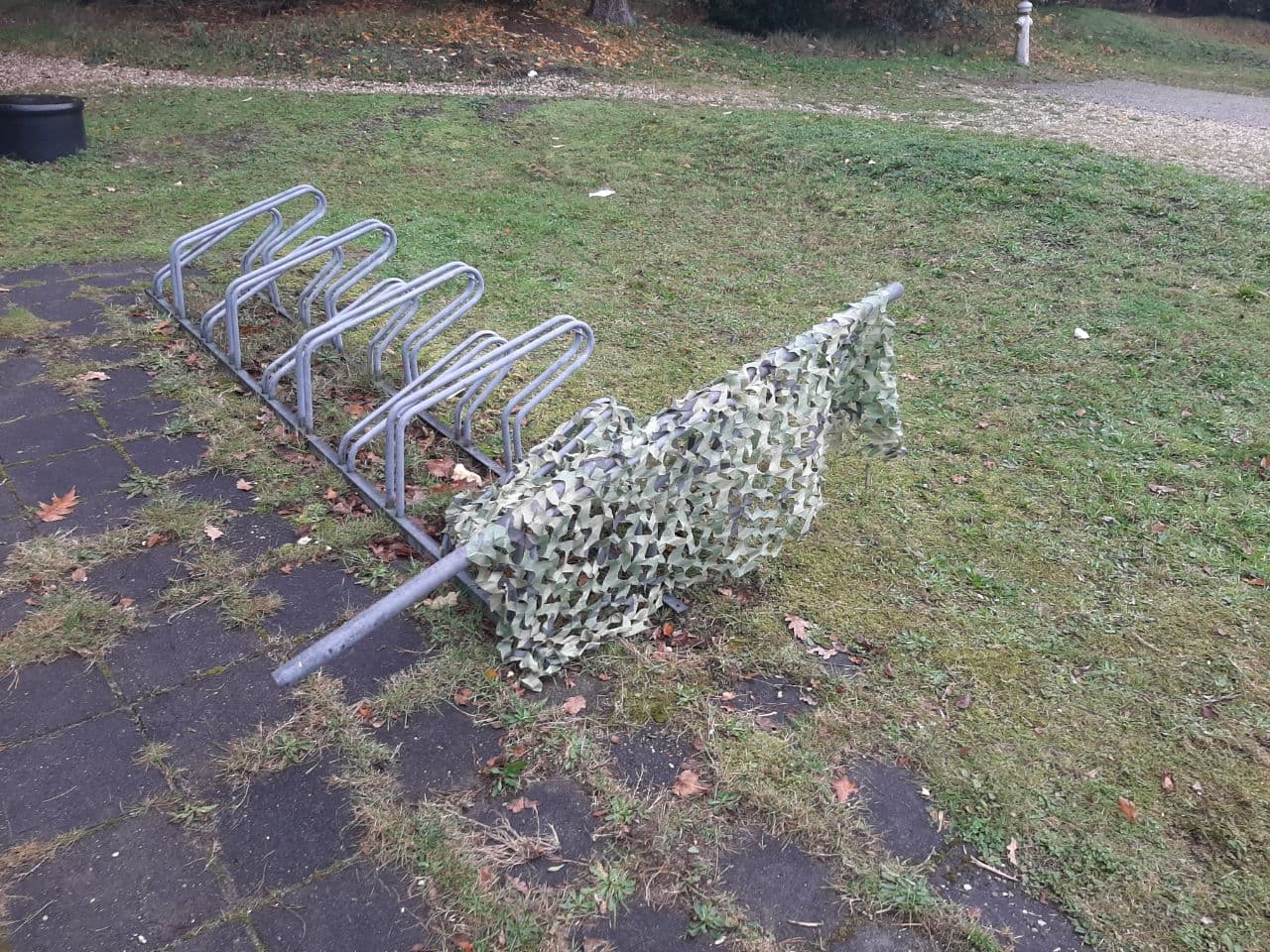
Denneth het is echt niet te geloven wat je als hobby hebt.
Dit is materiaal om later bij de NASA of een dergelijke organisatie te solliciteren. Reken er maar op dat gezien jouw jonge leeftijd, hoog wordt aangeslagen. Complimenten! Eduard
Very impressive Denneth! You can be very proud! Go on!
Love from Liesbeth